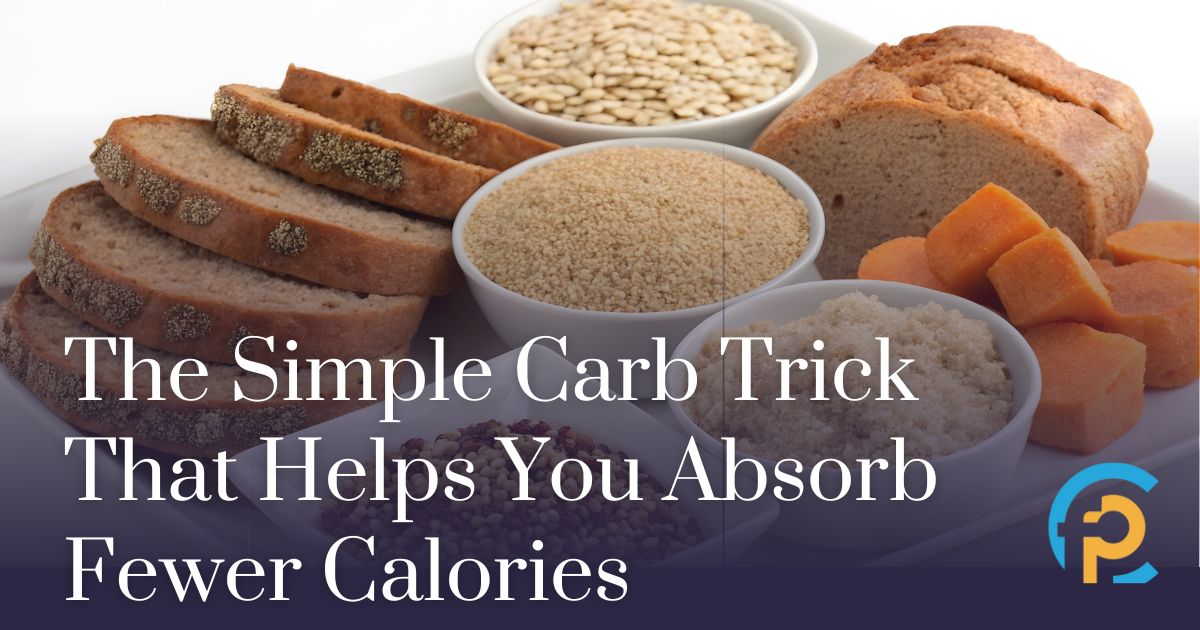

The Simple Carb Trick That Helps You Absorb Fewer Calories
What if I told you that how you cook and store your food can actually change how your body digests it — and even how many calories you absorb?
That’s right. The way you prepare certain foods like rice, potatoes, and pasta can have a surprising impact on your metabolism and digestion, thanks to something called resistant starch.
Let’s break it down.
Why Starchy Carbs Get a Bad Reputation
Carbs have been unfairly blamed for weight gain for years — especially the starchy ones. Foods like white rice, pasta, and potatoes often get labeled as “bad carbs,” leading many people to cut them out completely when trying to lose weight.
But here’s the truth:
Starchy carbs aren’t the problem. How we eat and prepare them matters far more.
These foods can absolutely fit into a healthy, fat-loss-friendly diet — especially when you understand how to take advantage of resistant starch.
What Is Resistant Starch?
Resistant starch is a type of carbohydrate that “resists” digestion in the small intestine. Instead of being broken down into glucose and absorbed like most carbs, it passes into the large intestine, where it becomes fuel for your good gut bacteria.
This process provides several benefits:
-
You absorb fewer calories from the same amount of food
-
It helps regulate blood sugar and insulin levels
-
It supports a healthier gut microbiome
-
It improves satiety, meaning you feel fuller longer
Some studies suggest that when certain starches are cooked and then cooled, you can cut digestible calories by up to 50% — all without changing your portion size.
How to Create Resistant Starch in Common Foods
Here’s the simple trick:
-
Cook your starchy carb (like rice, potatoes, or pasta) as usual.
-
Let it cool completely in the refrigerator for at least 8–12 hours.
-
Eat it cold or reheat it — it doesn’t matter. The resistant starch remains intact.
When these foods cool, their molecular structure changes — the starch “crystallizes,” becoming more resistant to digestion. Reheating doesn’t reverse this process, so you still get the benefit even if you prefer your food warm.
Examples You Can Try
-
Cooked and cooled rice: Great for stir-fries, sushi, or meal prep bowls.
-
Roasted or boiled potatoes: Chill them before reheating — perfect for breakfast hash or potato salad.
-
Pasta: Boil, cool, then reheat with olive oil and veggies for a satisfying, lower-glycemic meal.
This is an easy, science-backed way to enjoy carbs while reducing their impact on your blood sugar and overall calorie absorption.
Why This Matters for Fat Loss
If you’re working toward fat loss or better energy balance, incorporating resistant starch can make your meals:
-
More filling, helping reduce overeating
-
Lower in net calories, supporting a calorie deficit
-
Easier on digestion, thanks to improved gut health
It’s not a “magic fix,” but it’s a simple, practical nutrition tweak that supports a sustainable approach to eating — especially for those who don’t want to eliminate carbs entirely.
The Bottom Line
Carbs don’t have to be the enemy — in fact, they’re your body’s preferred source of energy. By learning how to prepare them wisely, you can improve digestion, reduce calorie absorption, and make your favorite foods work for you, not against you.
So next time you cook rice, pasta, or potatoes, try this:
Cook them, cool them, and then enjoy them.
Your gut (and your goals) will thank you.
Want to Learn More About Smarter Nutrition for Fat Loss?
At Complete Fitness & Performance in Columbus, Ohio, we help busy people lose fat, build strength, and feel their best — all without restrictive dieting or confusing food rules.









